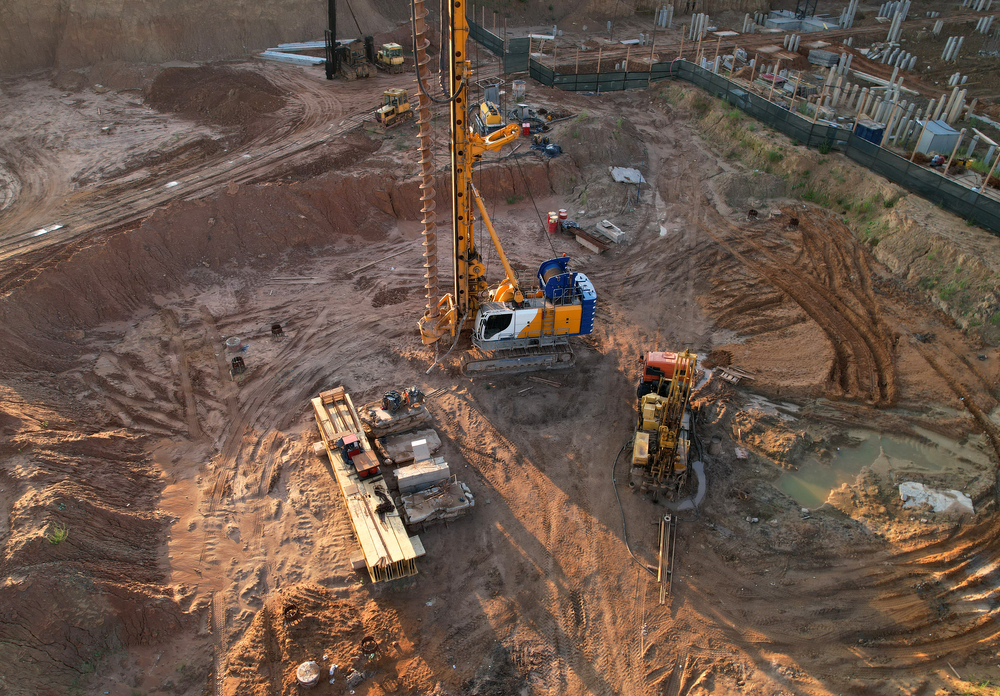The Ultimate Guide To Geotheta
The Ultimate Guide To Geotheta
Blog Article
Not known Factual Statements About Geotheta
Table of ContentsSee This Report on GeothetaGeotheta Fundamentals ExplainedGeotheta for BeginnersSome Ideas on Geotheta You Should Know
They team up with civil engineers, structural designers, engineers, and various other specialists to integrate geotechnical considerations into the total project style and construction procedure. This requires reliable team effort, sychronisation, and communication to guarantee that the geotechnical aspects straighten with the task objectives and meet regulative requirements.Mining & Materials Design: Principles of drilling, infiltration rates, and factors affecting the option of boring method. Features of explosives, shooting systems and blast patterns. Blasting strategies in surface area and underground functions. Special blowing up strategies at excavation borders. Vibration and noise control. Mechanical and continuous approaches to fragmentation, consisting of longwall shearing and fullface boring.
Modelling of piece and bit dimension distributions; comminution as a transfer function. Comminution technology: squashing, grinding, size category. Integrated evaluation of fragmentation and comminution operations. Offered by: Mining & Materials Design.
The 5-Minute Rule for Geotheta
Bachelor's level programs in civil, geotechnical, geological, and ecological design commonly last four years and consist of basic education and learning programs in English, social scientific research, and the liberal arts, along with courses in advanced mathematics, structural geology, and liquid mineralogy. (https://www.edocr.com/v/p4pabymp/ianhammond2191/geotheta)
Geotechnical engineering entails the assessment of the soil and rock problems at a particular site, and their effects for the development of that site. As the majority of structures depend on the ground for support, it lacks shock that a comprehensive understanding of the ground problems, and the viability of foundation systems, are crucial to the lasting stability and performance of the structure or framework.
Specialising in the investigation of geological developments and ground practices, geotechnical engineers perform scientific investigations and screening to understand the impact these geological formations might carry the style and construction of building, civil and facilities jobs. This know-how is crucial for the design and construction of buildings, roads, passages, dams, bridges, and water and sewage systems.
The geotechnical team at Douglas Partners regularly consult with architects, design engineers, developers, and home builders to make referrals on design and development proposals to make certain that the constructed frameworks are suitably designed for the ground problems. The design of footing systems needs to consider the weight of the structure, the ability of the ground to sustain that weight together with activity resistances and efficient building.
Little Known Questions About Geotheta.
This task is greatly simplified by the usage of our Douglas Map geospatial system that makes this information readily obtainable in a very easy to utilize internet browser user interface. A geotechnical engineer will certainly direct the boring of boreholes and examination pits to gather soil and various other samples, and likewise analyze surface attributes and ground direct exposures to create a geotechnical model of the subsurface problems.
Depending on the job type and ground problems came across, laboratory testing might to name a few things examine toughness, compressibility, reactivity and/or leaks in the structure of soil and rock examples. Hereafter information is gathered and collected, the results are used for a geotechnical design of the website, which is generally presented as sections throughout the website.

A geotechnical investigation naturally can just analyze the ground problems at the areas pierced or excavated. Natural variations in dirt and rock problems can take place throughout a website and in between examination locations. It is as a result excellent method that the geotechnical designer be kept throughout construction of the job to give on-site confirmation that the ground conditions run into are constant with the expectations and recommendations provided in the geotechnical investigation report.
Facts About Geotheta Uncovered
Geotechnical designers utilize their in-depth expertise of dirt and rock to assess risk and address troubles on varied facilities projectsGeotechnical engineering is a specialist branch of civil design which looks at the practices of planet products and the application of dirt and rock auto mechanics. Geo Tech Engineering. As a geotechnical designer, you will assess the physical, mechanical and chemical properties of soil and rock in order to develop structures, preserving frameworks and earthworks
Geotechnical design is carefully connected to and overlaps with, both engineering geology and ground design - https://es.quora.com/profile/Ian-Hammond. It's possible to specialise in geotechnics or benefit a geotechnical company yet be called a design rock hound or a ground engineer. As a geotechnical engineer, you'll require to: develop and preserve partnerships with customers and various other experts associated with the site, throughout each projectmaintain safety criteria on site be mindful of cost implications when you make recommendationsstudy geological maps and aerial pictures from a variety of sources and from various time periodsexamine construction prepares to see how feasible they are based upon your understanding of the siteinvestigate risks or geological hazards for the sitesearch for eco sensitive functions, such as landfill beginning to establish accurate and expository ground modelsplan field investigationsdrill and analyse samples of bedrock, dirt, groundwater and extra products manage various other professionals on sitesolve technological issues as they emerge, such as unforeseen structures at drill sitesmonitor problems throughout and after building and construction to ensure frameworks are stable in the brief and lengthy termadding information accumulated on site to your initial researchcreating geotechnical estimations, illustrations, and two or three-dimensional computer system models translating the datamaking referrals regarding the recommended use of the site

Report this page